Admissions Open for
Why Arts Class is Beneficial
Emotional Well-being

Cognitive Development

Communication

Creativity

Cultural Awareness
Arts Fundamentals

- Composition: The visual components of artwork are arranged to suit a balance, harmony, and focal point, a key aspect of visual arts classes in high school.
- Color: The use of hue, shade, and tone to create mood, contrast, and interest in terms of appearance, essential in painting and drawing.
- Line: A basic element that defines shapes, creates movement, and adds depth in artistic expression, a fundamental skill in art courses.
- Form: The three-dimensional quality of an object, which gives an object depth, volume, and makes it appear real, a critical concept in drawing and sculpture.
- Shape: The space inside the lines and colors that create a basis for any artistic design, helping students explore art forms in art and craft classes in school.

- Composition: The visual components of artwork are arranged to suit a balance, harmony, and focal point, a key aspect of visual arts classes in high school.
- Color: The use of hue, shade, and tone to create mood, contrast, and interest in terms of appearance, essential in painting and drawing.
- Line: A basic element that defines shapes, creates movement, and adds depth in artistic expression, a fundamental skill in art courses.
- Form: The three-dimensional quality of an object, which gives an object depth, volume, and makes it appear real, a critical concept in drawing and sculpture.
- Shape: The space inside the lines and colors that create a basis for any artistic design, helping students explore art forms in art and craft classes in school.
Highlights of our Arts

Nursery, K1, K2
- Creative Play - Finger painting, color activities, and simple crafts to inculcate imagination and motor activity.
- Basic Shapes & Colors - Primary colors and basic shapes that help in developing visual recognition and enrich the expression through art.
- Hand-Eye Coordination - Activities include doodling and tracing to develop refined motor skills for smoother control of movement.
- Sensory Exploration – Through varied textures and materials, increase sensory awareness and artistic curiosity.

Grade 1-2
- Creative Play – Finger painting, color activities, and simple crafts to encourage imagination and motor skills, essential in extracurricular activities.
- Basic Shapes & Colors – Primary colors and basic shapes that help in developing visual recognition and enrich high school fine arts learning.
- Hand-Eye Coordination – Activities include doodling and tracing to develop refined motor skills for smoother control of movement, crucial in art projects.
- Sensory Exploration – Through varied textures and materials, increase sensory awareness and artistic curiosity, introducing students to a variety of media.

Grade 3-5.
- Painting & Mixed Media — Students learn about visual arts with a step-by-step instruction style using watercolors, acrylics and oil pastels.
- Perspective & Depth – Understanding shadowing and 3D techniques in order to add depth and realism to drawings, a major focus area in high school visual arts.
- Cultural Art Exploration – Studying different art forms from around the world to develop a deeper understanding of arts programs.
- Art & Self-Expression – Encouraging students to create personal artwork that reflects emotions and ideas, a core concept in art schools.

Nursery, K1, K2
- Creative Play - Finger painting, color activities, and simple crafts to inculcate imagination and motor activity.
- Basic Shapes & Colors - Primary colors and basic shapes that help in developing visual recognition and enrich the expression through art.
- Hand-Eye Coordination - Activities include doodling and tracing to develop refined motor skills for smoother control of movement.
- Sensory Exploration – Through varied textures and materials, increase sensory awareness and artistic curiosity.

Grade 1-2
- Creative Play – Finger painting, color activities, and simple crafts to encourage imagination and motor skills, essential in extracurricular activities.
- Basic Shapes & Colors – Primary colors and basic shapes that help in developing visual recognition and enrich high school fine arts learning.
- Hand-Eye Coordination – Activities include doodling and tracing to develop refined motor skills for smoother control of movement, crucial in art projects.
- Sensory Exploration – Through varied textures and materials, increase sensory awareness and artistic curiosity, introducing students to a variety of media.

Grade 3-5.
- Painting & Mixed Media — Students learn about visual arts with a step-by-step instruction style using watercolors, acrylics and oil pastels.
- Perspective & Depth – Understanding shadowing and 3D techniques in order to add depth and realism to drawings, a major focus area in high school visual arts.
- Cultural Art Exploration – Studying different art forms from around the world to develop a deeper understanding of arts programs.
- Art & Self-Expression – Encouraging students to create personal artwork that reflects emotions and ideas, a core concept in art schools.
Our Arts Lab Setup

The extra-curricular art class at Orchids International School is designed to help students explore multiple art forms and become well-rounded artists.
- •Art Studio with Plenty of Room and Light: A bright and spacious studio where students can explore any art activities in Indian schools freely.
- •High-Quality Art Supplies & Tools: Things such as paints, pastels, clay, and digital tools needed for visual arts classes at the high school level.
- •Dedicated Workstations: Space for painting, sketching, sculpting and digital designing for fine arts students to channel creativity in high school fine arts.
- •Inspiration & Display Corners: Showcasing well-known artwork alongside student creations to encourage new learners and highlight the best work in art and craft classes in school.
Explore the Arts Activity

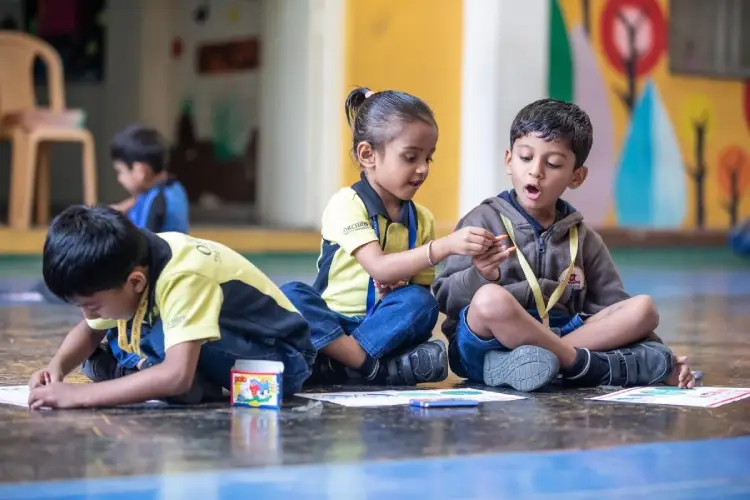
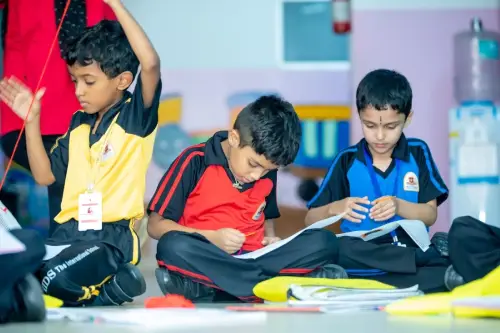
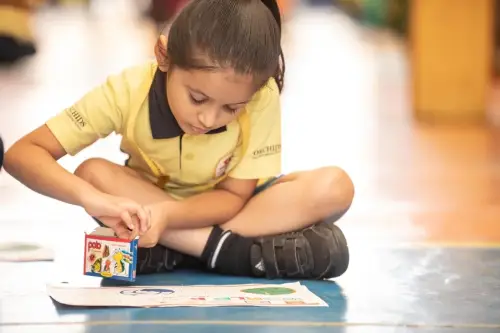
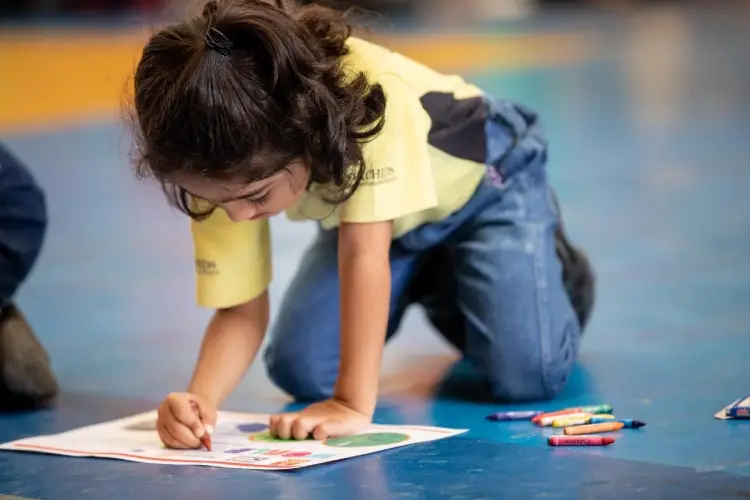
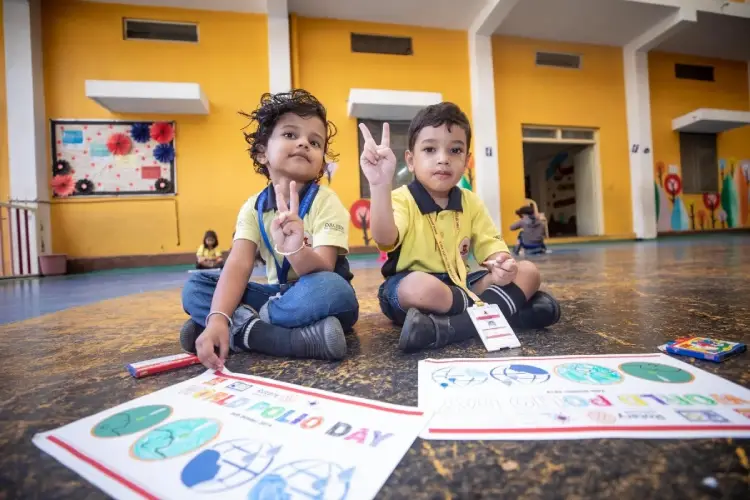
Frequently Asked Questions
The best school for arts students depends on their interests, location, and career goals. Globally renowned institutions include Royal College of Art (UK), Rhode Island School of Design (USA), Parsons School of Design (USA), and École des Beaux-Arts (France). In India, Sir J.J. School of Art, National Institute of Design (NID), and Faculty of Fine Arts, MSU Baroda are top choices. These schools offer specialized programs in fine arts, design, and applied arts, along with experienced faculty and strong industry connections. It's important to consider the curriculum, faculty, infrastructure, and placement opportunities before making a choice.
Art in high school is a creative subject that allows students to express themselves through various forms like drawing, painting, sculpture, photography, and digital art. It helps develop critical thinking, problem-solving skills, and emotional expression. High school art classes often explore different artistic techniques, styles, and historical influences. Students learn to analyze and interpret artworks, enhancing their visual literacy. Art also fosters creativity, patience, and attention to detail. It can be a fun and relaxing way to balance academic subjects. Many schools offer extracurricular activities like art clubs, exhibitions, and competitions. Ultimately, high school art encourages self-expression and appreciation for artistic culture.
The best art school depends on what you're looking for—fine arts, digital media, or design. Globally, the Royal College of Art (UK) is often ranked the best for fine arts and design. In the U.S., the Rhode Island School of Design (RISD) is highly respected for its rigorous curriculum. The School of the Art Institute of Chicago (SAIC) is known for interdisciplinary studies, while Yale University’s MFA program is top-tier for fine arts. If you're into animation or entertainment arts, California Institute of the Arts (CalArts) is a leader. For architecture and design, Massachusetts Institute of Technology (MIT) offers strong programs. Ultimately, the best school depends on your artistic goals!
At Orchids International School, students engage in a diverse visual arts curriculum designed to foster creativity and artistic expression. The program includes:
-
Drawing and Sketching: Fundamental techniques to enhance observation and rendering skills.
-
Painting: Exploration of various mediums such as watercolors, acrylics, and oil paints.
-
Sculpture and Clay Modeling: Hands-on experience in three-dimensional art forms, encouraging tactile creativity.
-
Digital Art & Graphic Design: Integration of technology with art, teaching students modern design tools and software.
-
Printmaking and Mixed Media: Combining different materials and techniques to create unique artworks.
These varied art forms allow students to cultivate their artistic talents, develop creative thinking, and gain a comprehensive understanding of visual expression.
CBSE Schools In Popular Cities
- CBSE Schools in Bangalore
- CBSE Schools in Mumbai
- CBSE Schools in Pune
- CBSE Schools in Hyderabad
- CBSE Schools in Chennai
- CBSE Schools in Gurgaon
- CBSE Schools in Kolkata
- CBSE Schools in Indore
- CBSE Schools in Sonipat
- CBSE Schools in Delhi
- CBSE Schools in Rohtak
- CBSE Schools in Bhopal
- CBSE Schools in Aurangabad
- CBSE Schools in Jabalpur
- CBSE Schools in Jaipur
- CBSE Schools in Jodhpur
- CBSE Schools in Nagpur
- CBSE Schools in Ahmednagar
- CBSE School In Tumkur













